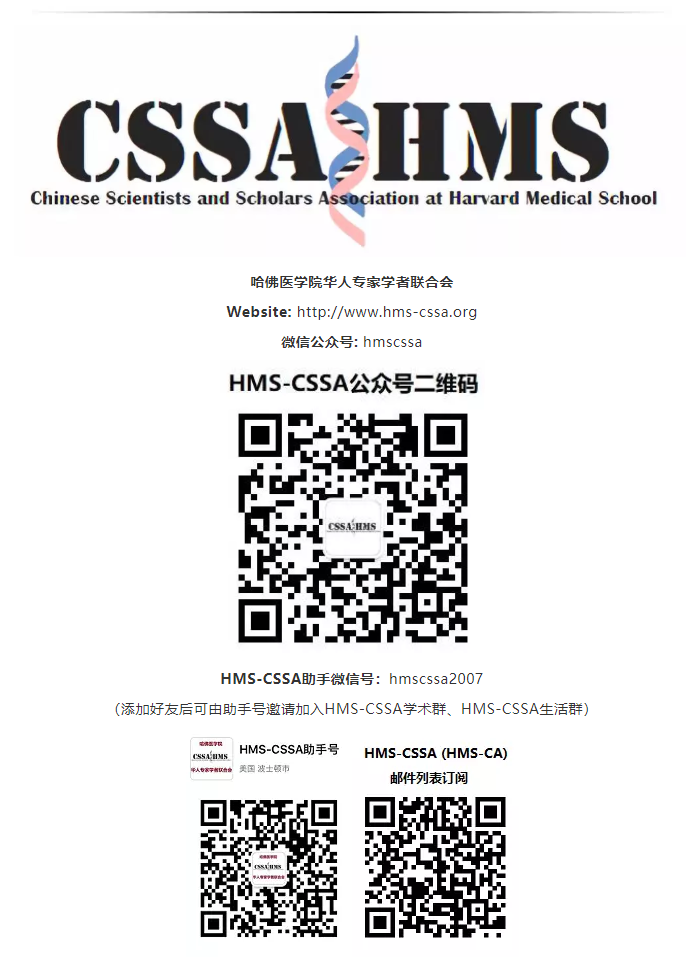2019
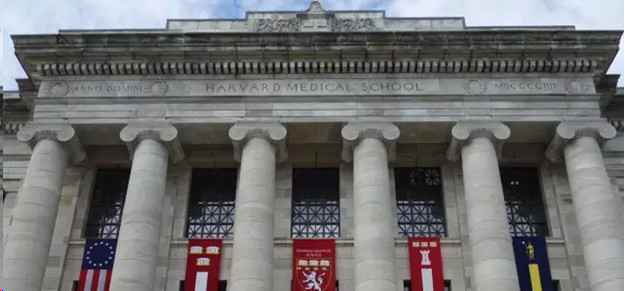
2019 HCLS Distinguished Research Award Announcement
| Name | Title | Affiliation |
| Zheng Shi | Postdoctoral Research Fellow | Howard Hughes Medical Institute, Department of Chemistry & Chemical Biology, Harvard University |
| Wanqiang Sheng | Postdoctoral Research Fellow | Department of Cell Biology, Boston Children’s Hospital, Harvard Medical School |
| Chaoran Li | Postdoctoral Research Fellow | Department of Immunology, Harvard Medical School |
| Yuanyuan Liu | Postdoctoral Research Fellow | F.M. Kirby Neurobiology Center, Boston Children’s Hospital, Harvard Medical School |
| Bo Chen | Postdoctoral Research Fellow | Boston Children’s Hospital, Harvard Medical School |
| Yunhao Tan | Instructor | Division of Nutrition/Gastroenterology, Boston Children’s Hospital, Harvard Medical School |
| Longfei Wang | Instructor | Boston Children’s Hospital, Harvard Medical School |
| Sanduo Zheng | Postdoctoral Research Fellow | Department of Biological Chemistry and Molecular Pharmacology, Harvard Medical School |
| Ben Zhou | Postdoctoral Research Fellow | Center for Genomic Medicine, Massachusetts General Hospital, Harvard Medical School |
| Wen Zhou | Postdoctoral Research Fellow | Dana-Farber Cancer Institute, Harvard Medical School |
| Tianmin Fu | Research Associate | Cellular and Molecular Medicine, Boston Children’s Hospital, Harvard Medical School |
| Jian Shu | Postdoctoral Research Fellow | Broad Institute of MIT and Harvard, Whitehead Institute |
1 Zheng Shi, Ph.D.

Howard Hughes Medical Institute, Department of Chemistry & Chemical Biology, Harvard University
Dr. Zheng Shi (师征) was born in Henan, China. He got a bachelor’s degree in Physics at the University of Science and Technology of China (USTC) in 2010. Then he moved to the US and got a PhD in Chemistry at the University of Pennsylvania in 2015. Currently, Zheng is a postdoctoral fellow at Harvard University, working on mechanical signaling in cells and biophysics of neurons. Starting this fall, Zheng will be an assistant professor at Rutgers University.
2 Wanqiang Sheng, Ph.D.
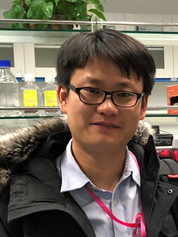
Department of Cell Biology, Boston Children’s Hospital, Harvard Medical School
Dr. Wanqiang Sheng obtained his Ph.D. degree in Biological Sciences in 2014 at National University of Singapore. He then joined Dr. Yang Shi’s lab at Boston Children’s Hospital/Harvard Medical School as a postdoctoral fellow since 2015. Dr. Sheng’s research has been focusing on understanding the epigenetic alterations in both tumor and immune cells that mediate immune escape and tumor resistance to immunotherapy. His research goal is to manipulate epigenetic regulators by which we can achieve effective and durable anti-tumor immunity.
3 Chaoran Li, Ph.D.

Department of Immunology, Harvard Medical School
Dr. Chaoran Li obtained a BSc from Peking University in 2008 and a Ph.D. from Duke University in 2014. He is currently a CRI Irvington postdoctoral fellow in the Department of Immunology at Harvard Medical School. His research focuses on dissecting the regulation of immune cells in adipose tissue and how they control organismal metabolism at homeostasis and during obesity-induced metabolic diseases.
Raul German Spallanzani, David Zemmour, Tianli Xiao, Teshika Jayewickreme, Chaoran Li, Paul J. Bryce, Christophe Benoist, and Diane Mathis. Distinct immunocyte-promoting and adipocyte-generating stromal components coordinate adipose-tissue immune and metabolic tenors. Sci Immunol. (Accepted)
4 Yuanyuan Liu, Ph.D.
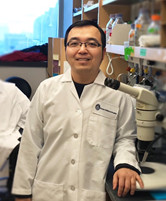
F.M. Kirby Neurobiology Center, Boston Children’s Hospital, Harvard Medical School
Dr. Liu is a postdoc fellow in Dr. Zhigang He’s lab at Boston Children’s Hospital. He is devoted to the functional dissection of descending supraspinal circuits and their repair after traumatic brain or spinal cord injuries. His recent findings showed that the cortex can directly modulate touch and tactile neuropathic pain sensitivity in the spinal cord (Liu et al., Nature). In his own lab, using multiple cutting-edge technologies, he will focus on deciphering cortical control over tactile sensory processing both in normal and pathological conditions.
Liu, Y., Latremoliere, A., Li, X., Zhang, Z., Chen, M., Wang, X., Fang, C., Zhu, J., Alexandre, C., Gao, Z., Chen, B., Ding, X., Zhou, J., Chen, C., Wang, K., Woolf, C.J., and He, Z. Touch and tactile neuropathic pain sensitivity are set by corticospinal projections. Nature, 2018, 561: 547–550.
Chen, B., Li, Y., Yu, B., Zhang, Z., Brommer, B., Williams, P.R., Liu, Y., Hegarty, S.V., Zhou, S., Zhu, J., Guo, H., Lu, Y., Gu, X., and He, Z. Reactivation of dormant relay pathways in injured spinal cord by KCC2 manipulations. Cell, 2018, 174: 1–15.
5 Bo Chen, Ph.D.
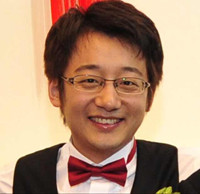
Boston Children’s Hospital, Harvard Medical School
Dr. Bo Chen got his BSc and PhD in the Universities in the U.K. and joined Prof. Zhigang He’s lab at Boston Childrens Hospital, Harvard Medical School in 2012. During my postdoctoral work, he discovered that manipulating the K+/Cl– co-transporter 2 (KCC2) activates functionally dormant relay pathways in a SCI model. These observations suggest that injury-induced alterations of neuronal excitability in the spinal circuits are an important target for functional restoration. In a translational perspective, their results identified KCC2 agonist, CLP290, as a promising treatment for promoting functional recovery after SCI. In the future, he will establish a dynamic research group with a focus on promoting functional recovery by modulating neuronal excitability after CNS traumas in clinically relevant models.
Chen B, Li Y, Yu B, Zhang Z, Brommer B, Williams P, Liu Y, Hegarty S, et al. Zhigang He. Reactivation of Dormant Relay Pathways in Injured Spinal Cord by KCC2 Manipulations. Cell ,2018, 174, 1-15
6 Yunhao Tan, Ph.D.

Division of Nutrition/Gastroenterology, Boston Children’s Hospital, Harvard Medical School
Dr. Tan is interested in understanding the spatiotemporal regulation of signal transduction in the context of infection and human diseases. He completed his Ph.D. training with Dr. Zhao-Qing Luo at Purdue University, where he illuminated unique mechanisms employed by bacterial pathogens to manipulate host membrane trafficking. As a Jane Coffin Childs postdoctoral fellow in Dr. Jonathan Kagan’s laboratory at Boston Children’s Hospital, he studies the cell biological and biochemical regulation of the innate immune system. He identified conserved immune-evasion strategies shared by pathogenic and commensal bacteria. He further discovered novel functions of a key signaling complex-myddosome-in the TLR pathway. He is currently leveraging synthetic immunology approaches to harness the power of innate immune signaling for developing novel therapeutic strategies.
Tan Y, Kagan JC. Biochemical Isolation of the myddosome from murine macrophages. Methods Mol Biol. 2018;1714:79-95.
Evavold CL, Ruan J, Tan Y, Xia S, Wu H, Kagan JC. The Pore-Forming Protein Gasdermin D Regulates Interleukin-1 Secretion from Living Macrophages. Immunity. 2018, 48(1):35-44.
7 Longfei Wang, Ph.D.
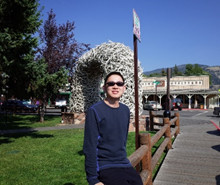
Boston Children’s Hospital, Harvard Medical School
Dr. Longfei Wang received his PhD in Biochemistry and Molecular Biology from the Institute of Biophysics, Beijing, China. After the completion of his degree, Longfei started working as a postdoctoral research fellow at Harvard Medical School. He later moved to Boston Children’s Hospital in the year of 2017 and was recently promoted to instructor in Biological Chemistry and Molecular Pharmacology. Longfei is a biochemist and structural biologist who aims to develop novel therapeutic strategies based on the structural insights of disease-causing macromolecules. Besides biomedical research, Longfei likes to play basketball, watch thriller movies and hack electronics.
Wang, L., Rowe, R.G., Jaimes, A., Yu, C., Nam, Y., Pearson, D.S., Zhang, J., Xie, X., Marion, W., Heffron, G.J. and Daley, G.Q. Small-molecule inhibitors disrupt let-7 oligouridylation and release the selective blockade of let-7 processing by LIN28. Cell reports, 2018, 23(10), 3091-3101.
Wang, L., Yang, Q., Jaimes, A., Wang, T., Strobelt, H., Chen, J. and Sliz, P. MightyScreen: an open-source visualization application for screening data analysis. SLAS DISCOVERY: Advancing Life Sciences R&D, 2018, 23(2), 218-223.
Choe, J., Lin, S., Zhang, W., Liu, Q., Wang, L., Ramirez-Moya, J., Du, P., Kim, W., Tang, S., Sliz, P. and Santisteban, P., George, R.E., Richard, W.G., Wong, K.K., Locker, N., Slack, F.J., Gregory, R.I. mRNA circularization by METTL3–eIF3h enhances translation and promotes oncogenesis. Nature, 2018, 561(7724), p.556.
8 Sanduo Zheng, Ph.D.
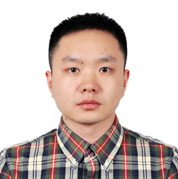
Department of Biological Chemistry and Molecular Pharmacology, Harvard Medical School
Dr. Zheng received his Ph.D. degree from National Institute of Biological Science, Beijing (NIBS) in 2013 and did his postdoctoral training in Andrew Kruse’s lab where he studied molecular mechanisms of neuroreceptors signaling and membrane transport. He has recently illuminated the molecular basis of how GABAB receptor signaling is rapidly desensitized, and this work opens a new avenue for GPCR desensitization study. He will establish his own lab at NIBS this year and continue working on GPCR desensitization.
Sanduo Zheng, Andrew Kruse; Ion channels: Solving a specificity mystery; eLife; 2019.
Sanduo Zheng, Lok-To Sham, Frederick Rubino, Kelly Brock, William Robins, John Meklanos, Debora Marks, Thomas Bernhardt, Andrew Kruse; Structure and mutagenic analysis of the lipid II flippase MurJ from Escherichia coli; PNAS, 2018, 115 (26): 6709-6714.
Lok-To Sham, Sanduo Zheng, Anastasiya Yakhnina, Andrew Kruse, Thomas Bernhardt, Loss of specificity variants of WzxC suggest that substrate recognition is coupled with transporter opening in MOP-family flippase; Mol Microbiol; 2018, 109 (5): 633-641.
Pengxiang Huang*, Sanduo Zheng*, Bradley Wierbowski, Youngchang Kim, Daniel Nedelcu, Laura Aravena, Jing Liu, Andrew Kruse, Adrian Salic; Structural basis of smoothened activation in Hedgehog signaling; Cell, 2018, 174(2):312-324. (*co-first authors)
9 Ben Zhou, Ph.D.

Center for Genomic Medicine, Massachusetts General Hospital, Harvard Medical School
Dr. Ben Zhou is currently a postdoc in Center for Genomic Medicine, MGH/ Harvard Medical School. Dr. Zhou’s research is focused on how nutrient sensing pathways regulate energy homeostasis and longevity, specifically the role of mTORC2 pathway in glucose and lipid metabolism and aging. His recent study suggests the permeability of mitochondria, regulated by mTORC2 pathway, may determine whether or not autophagy, a cellular process that removes damaged and dysfunctional molecules and cellular components, is beneficial or detrimental to organism health.
10 Wen Zhou, Ph.D.
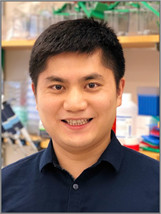
Dana-Farber Cancer Institute, Harvard Medical School
Dr. Wen Zhou is driven to understand the fundamental mechanism of protein–nucleic acid interactions and how these complexes determine the cellular and organismal function using biochemistry, structural biology and cell biology. After joining HMS/DFCI as a postdoc, his research focus on an innate immunity enzyme, called Cyclic GMP–AMP synthase (cGAS), that allows cells to recognize pathogen- and tumor-derived cytosolic DNA. In collaboration with collogues, he showed that cGAS DNA-sensing is adapted for human-specific regulation not present in other mammalian homologs. Dr. Zhou is now trying to fully understand how human cGAS is activated and regulated.
Preview featured in Immunity: “Human cGAS Has a Slightly Different Taste for DNA”
Press releases: Harvard Medical School “Guardian of the Cell”
Press releases: Parker Institute for Cancer Immunotherapy “Key Cancer Detection Protein”
Barnett KC, Coronas-Serna JM, Zhou W, Ernandes MJ, Cao A, Kranzusch PJ, Kagan JC (2019). Phosphoinositide Interactions Position cGAS at the Plasma Membrane to Ensure Efficient Distinction between Self- and Viral DNA. Cell, 2019, 176, 1432–1446.
Zhang L, Zhou W, Che L, Rochaix JD, Lu C, Li W, Peng L. PPR protein BFA2 is essential for the accumulation of the atpH/F transcript in chloroplasts. Frontiers in Plant Science, 2019, doi: 10.3389/fpls.2019.00446
Zhou W, Whiteley AT, Kranzusch PJ (2019). Analysis of human cGAS activity and structure. Methods in Enzymology (In proof).
11 Tianmin Fu, Ph.D.

Cellular and Molecular Medicine, Boston Children’s Hospital, Harvard Medical School
Pan, L.*, Fu, T.M.*, Zhao, W.*, Zhao, L.*, Chen, W., Qiu, C., Liu, W., Liu, Z., Piai, A., Fu, Q., Chen, S., Wu, H., Chou, J.J. Higher-order clustering of the transmembrane achor of DR5 drives signaling. Cell, 2019, 176: 1477-89 PMID:30827683 (*co-first author)
Fu, T.M., Shen, C., Li, Q., Zhang, P., Wu, H. Mechanism of ubiquitin transfer promoted by TRAF6. Proc. Natl. Acad. Sci. USA, 2018, 115: 1783-88. PMID:29432170, PMCID: PMC5828637.
Shen, C., Lu, A., Xie, W.J., Ruan, J., Negro, R., Egelman, E.H., Fu, T.M.#, Wu, H.# Molecular mechanism for NLRP6 inflammasome assembly and activation. Proc. Natl. Acad. Sci. USA, 2019, 116: 2052-57. PMID:30674671. (#Co-corresponding author)
Li, Y.*, Fu, T.M.*#, Lu, A., Witt, K., Ruan, J., Shen, C., Wu, H#. Cryo-EM structures of ASC and NLRC4 CARD filaments reveal a unified mechanism of nucleation and activation of caspase-1. Proc. Natl. Acad. Sci. 2018, USA, 115: 10845-52. PMID:30279182. (#Co-corresponding)
12 Jian Shu, Ph.D.
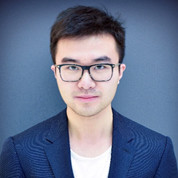
Broad Institute of MIT and Harvard, Whitehead Institute
Dr. Shu is a Helen Hay Whitney fellow in Dr. Eric Lander lab at Broad Institute and Dr. Rudolf Jaenisch lab at Whitehead Institute. He works with stem cell biologists, computational biologists, and mathematicians to develop new experimental and computational tools to study complex systems in stem cells biology using different single cell sequencing techniques. In his Ph.D. work with Dr. Hongkui Deng in Peking University, Jian identified novel cocktails to make iPSCs and proposed a provocative model to challenge the conventional definition about pluripotency.
(撰稿:黄依婷,曹婵;编辑:李江)
招聘详情请点击此处